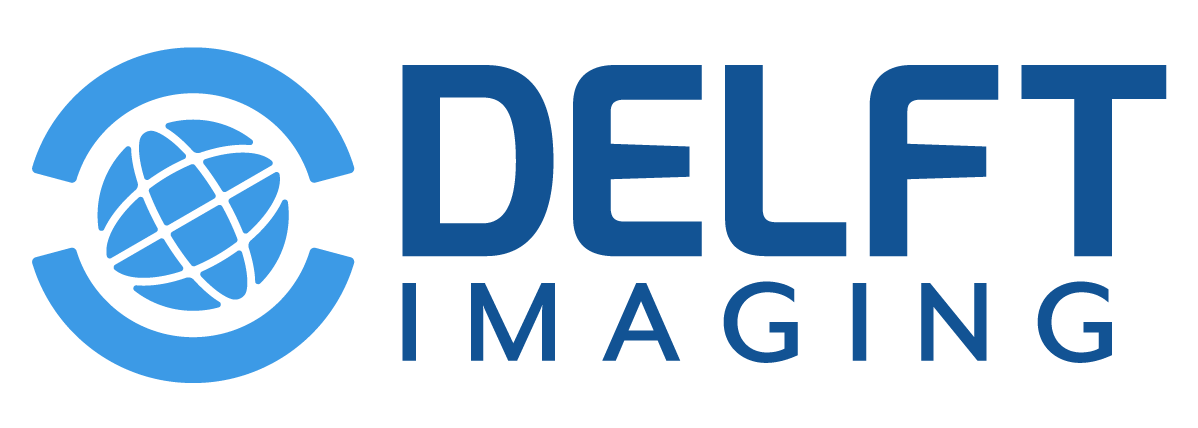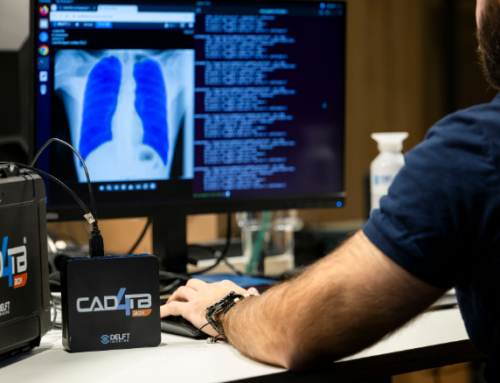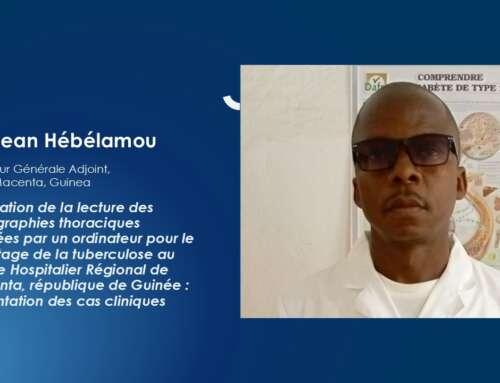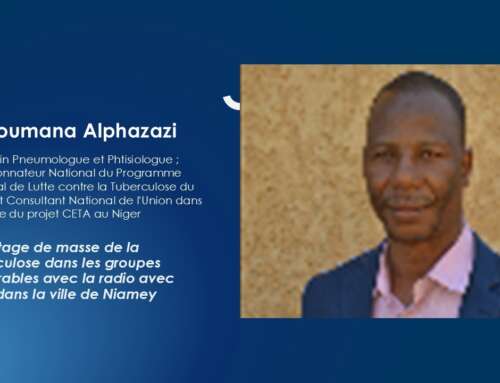During the Delft Imaging webinar “AI for TB Screening in Francophone Africa: Challenges, Opportunities and Impact,” Dr. Oumar Abdelhadi, Coordinating Physician of Chad’s National Tuberculosis Control Program (PNT), presented compelling evidence of how artificial intelligence (AI) is enhancing tuberculosis (TB) detection in hard-to-reach communities. His presentation offered a detailed overview of screening initiatives among nomadic populations, incarcerated individuals, and refugees using AI-enabled X-ray technology.
A high-burden disease in a complex landscape
“Tuberculosis is one of the real health problems we have here,” Dr. Abdelhadi explained. “In here, Chad, we have an incidence of tuberculosis that is estimated at 139 new cases per 100,000 inhabitants per the 2024 report. This applied to the Chad population in 2024 gives us about 27,000 cases of TB expected. But we’re able only to detect 16,902 new cases, and those were able to be put on treatment. And there is a gap of 37% in missing cases.”
With 120 TB treatment centers and 54 GeneXpert machines, diagnostic coverage has expanded, yet regional disparities persist. “There are higher chances of not reaching health centres. Therefore, we have a lower treatment there, and the interest of using that mobile strategy with AI is therefore important to use them in those areas.”
A mobile strategy built around CAD4TB
To address access gaps, Chad implemented a mobile screening strategy equipped with digital X-ray and CAD4TB. “We developed a strategy to reduce the number of people missing from TB surveillance, and through financing, we bought a Delft truck equipped with an X-ray machine with AI for TB screening as part of a mobile strategy,” said Dr. Abdelhadi. “We also identified key vulnerable populations and priority sites, and developed a method through X-ray that we were able to detect. We also developed algorithms tailored to the key vulnerable populations identified.”
The initiative was strengthened through capacity building across multiple regions. A total of 220 health professionals were trained in five major cities with higher TB burdens. Ninety community health workers were trained to serve nomadic populations across 15 health centers located in transhumance corridors. In addition, 120 prison cell leaders received training in 12 detention centers to support TB awareness, screening, and adherence to treatment. Another 100 health workers were trained in eastern and southern Chad refugee camps.
Field Results: nomads, detention centers, and refugee camps
Among nomadic populations, Dr. Abdelhadi reported: “We recorded 667 people that were registered… 207 who did X-ray, 20 people so 9.7% of them had abnormal X-rays… among those positive to do x-ray, five were confirmed TB cases that were sensitive and started treatment.”
In 12 detention centers: “5,511 people received x-rays… among them 385 people, 7%, showed signs of TB according to the AI… 96 were confirmed” and started on treatment.
In 9 refugee camps: “938 people registered… 592 people so 63% were suspected TB cases… 75% so therefore 12.7% had abnormal X-rays according to the AI… of whom 21 were confirmed TB cases. Among the 21, we had seven that had a TBMR multi-resistant tuberculosis and one that had a pre-XDR.”
In total: “We screened 7116 people… 6357 had undergone x-ray… 589 people had an x-ray showing abnormalities… 112 of them, therefore GeneXperts confirmed 19%… all 112 were enrolled in treatment.”
Impact and Community Acceptance
“This was appreciated by the population and the authorities. This was the first success we had,” Dr. Abdelhadi noted. “There was a real improvement in access to TB screening and diagnosis for vulnerable populations through AI… The third success is that we’re able to improve TB data connection, especially among key populations.”
CAD4TB enabled earlier triage, higher screening volumes, and accelerated treatment initiation, especially in remote regions with limited diagnostic infrastructure.
Sustained Partnership and Forward Outlook
Dr. Abdelhadi acknowledged Delft Imaging’s essential role in supporting the continuity of services. “We really want to say thank you and congratulations to Delft Imaging because, for diagnosis, we’ve always communicated with the Delft Imaging team, who assisted us immediately.” He continued, “Beginning of 2025, we were able to renew our license for three years, so we want to thank this collaboration with Delft Imaging, which helped us to continue that license, so as not to lose this diagnosis.”
He further noted, “We called Delft Imaging through its representatives in Ghana, who tried to find solutions to continue to work for those populations.”
Chad’s mobile AI-enabled strategy has earned support from national and international partners. “The Global Fund… has substantial support for us in the search for missing TB cases,” said Dr. Abdelhadi. The Ministry of Health has prioritized mobile screening with CAD4TB as part of its broader TB elimination framework.
“As a conclusion, therefore, we keep in mind that the use of our AI for tuberculosis screening in Chad represents a significant advance in the fight against this disease,” he stated. “It can contribute to this strategy that we want to end tuberculosis by 2030.”



